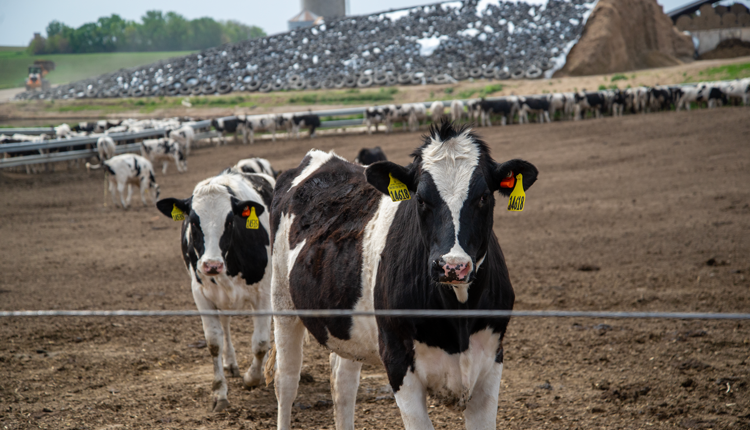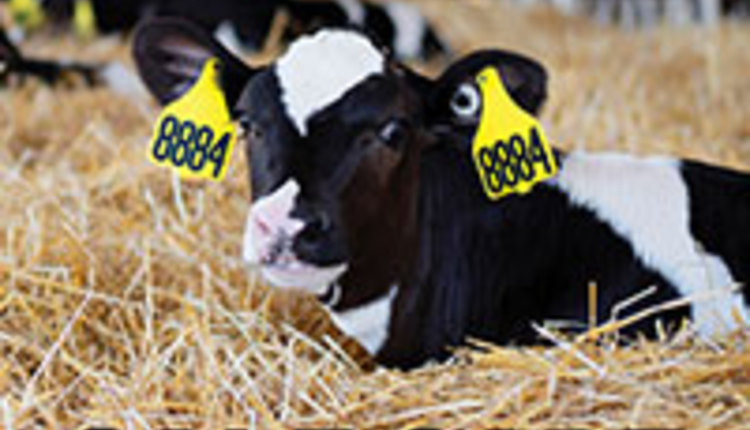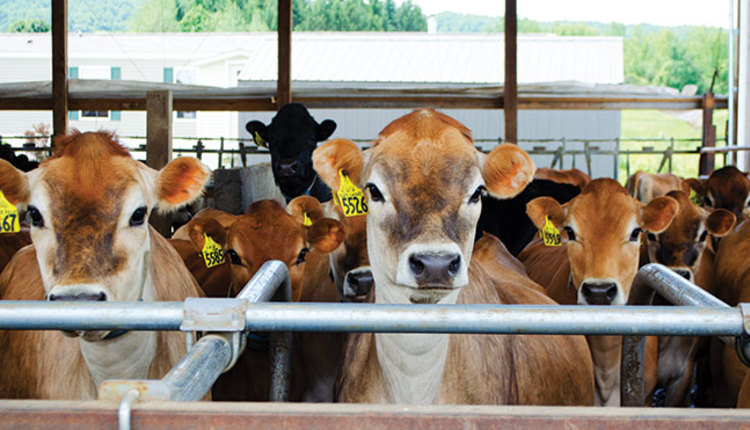
Straw is commonly fed in traditional heifer diets to reduce the energy density of the ration and intake due to straw’s slow and poor digestibility. It can do the job, but it comes at a cost, and often people do not consider all costs involved in feeding straw.
We know that on an ad libitum basis, a dairy heifer will eat about 1% of her body weight in neutral detergent fiber (NDF) per day. Keep in mind that the alternative to ad libitum feeding with NDF limiting intake is to skip or minimize the straw and simply limit the amount of feed that is offered to your heifers per day.
Using either system, we can reduce the energy intake of growing heifers at some stages when that is the desired effect. Often, the energy level of the forages available on many farms today is such that heifers will overconsume energy if allowed free access to just forages, and they will get fat.
Factor in processing
There are four components to the cost of feeding straw in heifer diets. First and foremost, there is the actual price of the straw. Reasonably good-quality straw that can be fed has a substantial cost in many areas. Good-quality straw often has several alternative markets, either for dry cows, other animal species, or for bedding. If you must buy it, you are paying market price, and if you harvest it yourself, you are giving up the opportunity cost to sell it. Either way, this can be a substantial cost. Straw is often close to grass hay in market price and sometimes even more.
A second cost to feeding straw in heifer rations is that the straw must be chopped. Straw should be chopped to be of similar particle size as the rest of the heifer’s ration as they will easily sort it out. Research has shown that the heifer is just as capable of sorting a ration as an adult cow to eat the more energy dense parts of a ration. The more dominant heifers in the group will get fat and others will get hay bellies from too much straw, leading to reduced growth.
So, add the extra step and cost of chopping straw with some sort of bale chopper, or worse yet, chopping it in your total mixed ration (TMR) mixer. Using a TMR mixer as a “chopper-mixer” is costly. You are taking what is likely your most expensive piece of feeding equipment and adding a lot of wear and tear to it. I have seen straw being chopped this way for 30 or more minutes per load. This adds tractor time and fuel, mixer wear and tear, and operator time.
The third part of straw feeding that is often overlooked is the metabolic energy cost for the heifer. The heifer takes time to eat the straw, and because of its poor digestibility, she has to ruminate a lot to break down the particle size to enable it to pass it through the digestive tract. Again, there has been research done on this aspect and we know that digestion of feeds — moving them from one end of the digestive tract to the other — takes about 40% of the maintenance energy that is required by a growing heifer.
When she is eating more feed and using more calories to digest feed, less of the total calories consumed can go toward growth. When she is less feed efficient with straw on an ad libitum feeding program, you get the desired lower energy intake but at the cost of reducing feed efficiency. A part of the greater feed efficiency that you get when limit feeding heifers is that more of the maintenance energy not used for digestion goes toward growth. This can be substantial.
The final part of feeding an ab libitum diet with straw is that much of the straw fiber is not digested and passes out of the heifer in the manure. Research with heifers has shown that for every additional pound of intake an ad libitum heifer eats, manure production will be 2.5 pounds more. This can add up quickly and again requires labor and equipment time to clean and haul. Some farmers who move away from straw or corn stover feeding to limit feed heifers say that the reduced manure coming from the heifer barn was their main reason for changing to that feeding system!
The next time you look at a heifer diet containing straw, which might have to be used due to facility limitations such as overcrowding or limited feedbunk space, remember that there are other parts to the cost of that straw in addition to market value. To be fair, limit-fed diets have to be pushed up at least once during the day to reduce heifers reaching for the residual feed. This may not be required in some ad libitum fed rations.
250410_181










